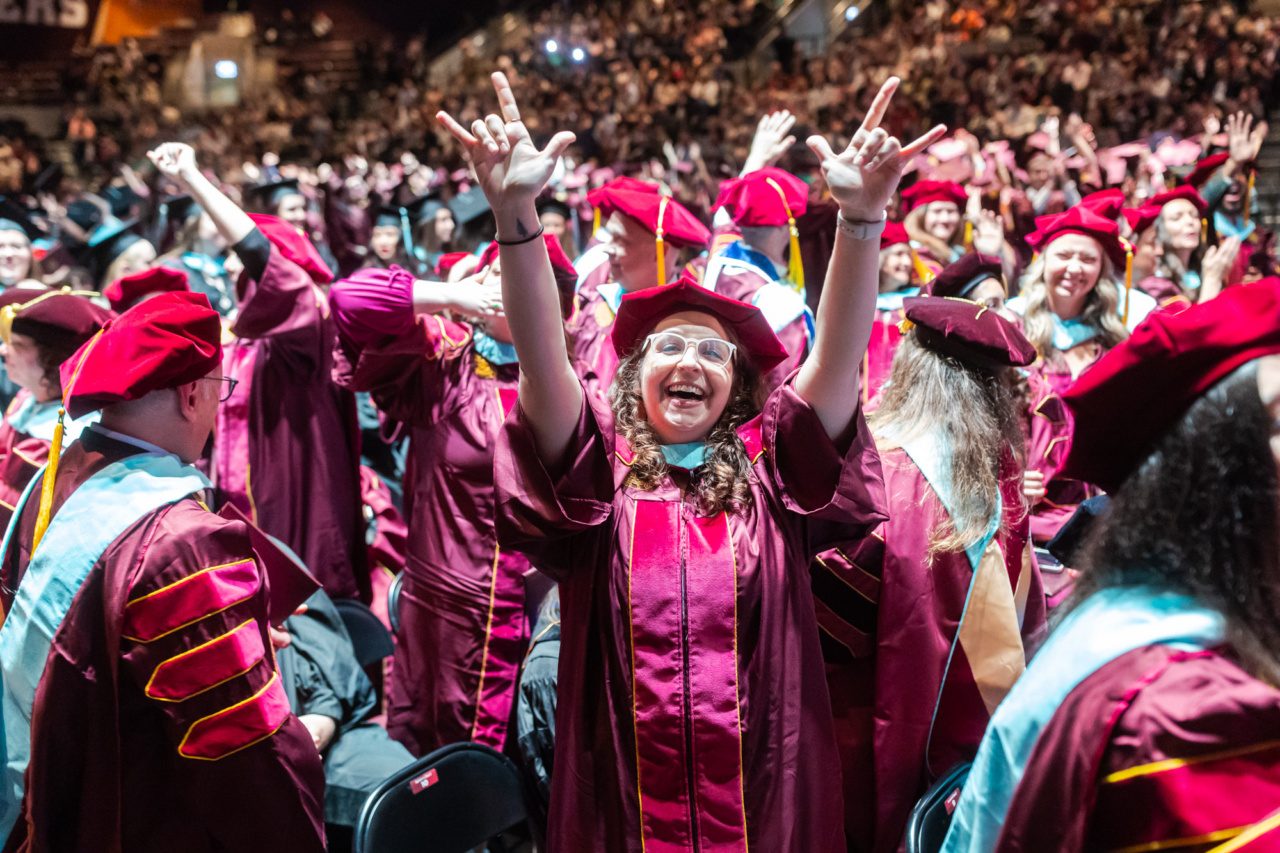
Undergraduates go beyond the classroom with summer program
A student’s first few semesters on campus typically revolve around the theme of discovery.
Making new friends. Exploring new interests. Navigating an unfamiliar campus. Picking a class schedule. Declaring a major. Figuring out what to do with a certain degree. Pursuing a passion.
All the above are part of the college experience, but a new program within Loyola University Chicago’s College of Arts and Sciences was created to provide opportunities that otherwise didn’t exist. The Undergraduate Summer Research Experience (USRE) was launched in May 2022 with the goal of introducing first- and second- year students to hands-on research projects that align with their personal interests.
USRE program director Catherine Putonti, who also serves as the associate dean for interdisciplinary initiatives and academic innovation within CAS, believes that Loyola undergraduate students are eager to apply their classroom knowledge to real-world applications. She also noticed a trend that students from marginalized communities face specific barriers to engaging in undergraduate research.
The opportunity to participate in undergraduate research at universities in the United States is typically offered to upper-division students. The Council of Undergraduate Research (CUR) published a journal in Scholarship and Practice of Undergraduate Research showing that there is evidence that students—particularly among underrepresented minorities—benefit from exposure to research projects during their freshman and sophomore years.
In the spirit of transformative education and engaged learning, the USRE program was designed to foster high-impact, one-to-one research experiences with faculty mentors for undergraduate students early in their academic careers.
“This program is unique in that it’s intensive research immersion, where students do full-time research with a faculty mentor for four weeks, while also receiving a financial fellowship to allow them to focus on their research work,” said Putonti. “Students get a glimpse into the research process, foster relationships with faculty, and are exposed to how the knowledge they are learning in a classroom can be applied in practical settings.”
Faculty members from the basic sciences, humanities, and social sciences submitted research projects and students had to apply to subjects that aligned with their general interests. Each student recipient was awarded $2,500 and was eligible to receive an additional $1,000 to use towards supporting their research project.
The four-week program culminated with students presenting their research in a hybrid symposium that was open to faculty, staff, friends, and family.
With an overwhelming number of student applications in the USRE program’s inaugural year, Putonti and her colleagues are looking to raise additional funds to expand the program and engage more faculty and students in years to come.
See below for a few examples of how students applied knowledge they learned in the classroom to faculty-led research projects that have real-world implications.
Robot recycler
Labor costs in the United States make it prohibitively expensive to process recycling domestically, leaving municipalities to discard it with the trash. Other countries around the world have developed recycling processors that have substantially reduced the volume of household recycling.
Sophomore Zoha Hassan partnered with Neil Klingensmith, an assistant professor of computer science, to build a prototype of a robotic recycling sorter that separates domestic recycling into proper categories. The pair utilized image processing software that distinguished between objects commonly found in domestic recycling—bottles, cans, paper, etc. Further developing this type of technology would help offset labor costs and assure proper recycling processes.
The art of knot theory
Knot theory, in mathematics, is the study of closed curves in three dimensions, and their possible deformations without one part cutting through another. The origins of knot theory can be traced back to the Book of Kells created in the Middle Ages, but the classification of knots is still an area of ongoing research for mathematicians today that is widely used in scientific research like mathematical physics or the understanding of DNA.
Under the mentorship of assistant professor Carmen Rovi, Loyola students Isabel Renteria and Kay Broun, learned the essential techniques to classify knots and examined their applications using digital reproductions.
Race and the landscape of Chicago evictions
Eviction is a growing issue in the United States that disrupts lives and impacts future employment, health, and safety. In Chicago, evictions take place four times as often in majority-Black neighborhoods compared to majority-white ones.
This summer Jonathan Nerenberg worked alongside associate professor Peter Rosenblatt to create and analyze a unique database of rental properties in Chicago that were matched to court records on evictions. Their study examined the inequality of Chicago’s eviction rate by investigating differences within properties owned by the same landlord.



